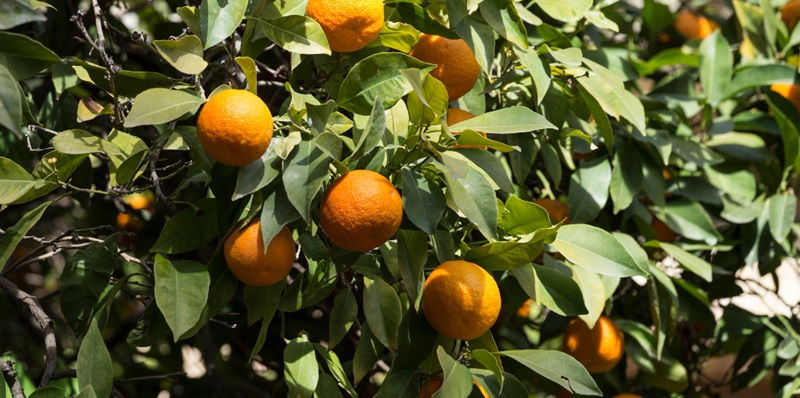In the world of citrus fruit production, ensuring the highest quality of fruits and optimizing post-harvest processes is crucial for growers. One significant aspect of quality control is accurately assessing the color of citrus fruits, as it serves as a vital indicator of ripeness and maturity. However, the limitations of traditional methods have prompted researchers to explore new technologies. This article delves into recent advancements in machine vision and neural networks, highlighting their potential in improving color analysis in citrus fruits. It also emphasizes the need for accurate color forecasting and accessible visualization methods.
Advancements in machine vision and neural networks
Traditionally, the subjective assessment of citrus fruit color has been a challenge due to varying lighting conditions and human bias. However, recent advancements in machine vision and the use of neural networks provide a more objective and reliable method for color analysis. These technologies leverage computer algorithms to detect, classify, and measure colors with greater precision. Despite their effectiveness, challenges persist in dealing with fluctuating lighting conditions and transforming color data into practical maturity assessments, making further research imperative.
Research gaps in color forecasting and visualization
While machine vision and neural networks offer promising solutions, accurately forecasting color changes in citrus fruit over time remains a significant research gap. Predicting how fruit color will evolve throughout the ripening process can greatly aid growers in determining the optimal harvest timing, ensuring the fruits are picked at their peak. Additionally, there is a need for creating accessible visualization methods that allow growers to easily interpret and analyze color data, enhancing decision-making and fruit quality management.
A Novel Framework for Citrus Fruit Color Transformation
To address these research gaps, scientists have established a novel framework for forecasting and envisioning color transformations in citrus fruits grown in orchards. This groundbreaking research has resulted in the development of an Android application that utilizes the framework to monitor and predict fruit color changes. By analyzing citrus images within a specific time frame, the network model generates a predictive color image of the fruit, providing valuable insights to growers.
Evaluation of the Network Model
In evaluating the network model’s performance, researchers have focused on semantic segmentation, a process that accurately labels and classifies individual fruit pixels. The network model achieved an impressive Mean Intersection over Union (MIoU) score for semantic segmentation. This high MIoU score demonstrates the proficiency of the network even in unpredictable lighting and environmental conditions, making it a reliable tool for color analysis in citrus fruits.
Merging design with embedding layers
The success of the network model lies in its unique merged design, which incorporates embedding layers that facilitate accurate calculations over different time intervals. By embedding these time intervals into a single model, the need for multiple models of varying time frames is significantly reduced. This design innovation streamlines the color forecasting process and enhances the efficiency of the application.
Authentication by sensory panels
To validate the network’s effectiveness, sensory panels were conducted to compare synthetic images generated by the network with real images of citrus fruits. The majority of panelists found a great similarity between the synthesized and real images, further confirming the accuracy and reliability of the network model. This validation strengthens confidence in utilizing the network for fruit quality assessment and harvest timing decisions.
Applications in Fruit Development Monitoring and Harvest Timing
The inventive method presented in this study enables finer monitoring of fruit development and facilitates ideal harvest timing, which holds true for not only various citrus types but also other fruit crops. By accurately predicting fruit color changes, growers can optimize their harvest schedules, ensuring the fruits are picked at the right time when they reach peak flavor and nutritional value. This approach has the potential to revolutionize fruit quality management and significantly improve the overall productivity of citrus farming.
Compatibility with Edge Devices and Practical Usage
One key advantage of the developed network model is its compatibility with edge devices, particularly smartphones. This compatibility enhances the practicality and accessibility of the color analysis application, enabling growers to use it directly on-site. With real-time analysis and immediate feedback, growers can make informed decisions regarding harvesting, quality control, and post-harvest processes. The versatility of generative models in agriculture and other domains is showcased through the application of this technology.
Advancements in machine vision and neural networks provide a more objective and reliable method for color analysis in citrus fruits. The novel framework and network model developed in this study offer accurate color forecasting and visualization methods, revolutionizing fruit quality management and harvest timing decisions. The authentication of the network’s effectiveness and its compatibility with edge devices further strengthens its potential and practicality for on-site usage. With continued research and development, this technology can significantly impact the citrus fruit industry and pave the way for improvements in other fruit crops as well.

